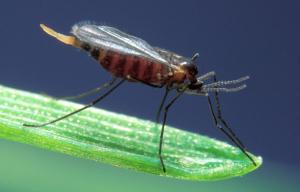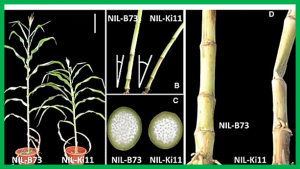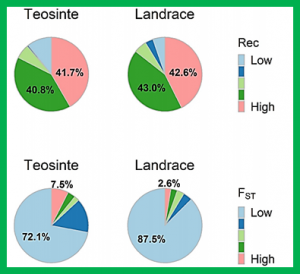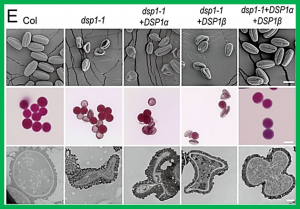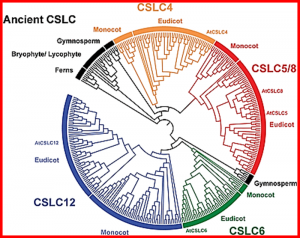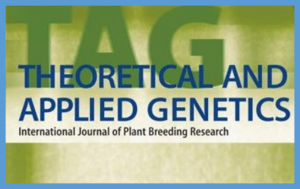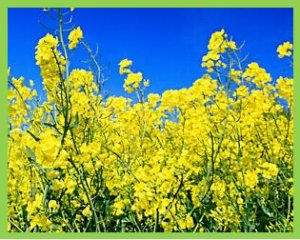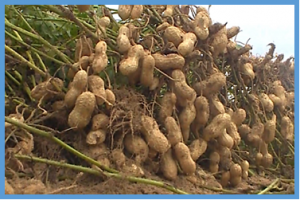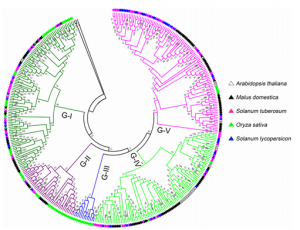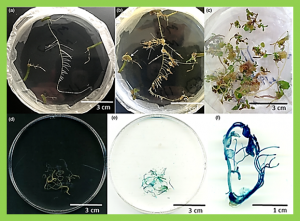Hessian fly (HF), Mayetiola destructor (Say), is one of the most destructive pests in wheat (Triticum aestivum L.) worldwide. Growing resistant cultivars is the most effective approach to minimize Hessian fly damage. To identify new quantitative trait loci (QTLs) for HF resistance, a recombinant inbred line population was developed by crossing HF resistant wheat line SD06165 to a susceptible line OK05312.
Stalk lodging, which is generally determined by stalk strength, results in considerable yield loss and has become a primary threat to maize (Zea mays) yield under high-density planting. However, the molecular genetic basis of maize stalk strength remains unclear, and improvement methods remain inefficient. Here, we combined map-based cloning and association mapping and identified the gene stiff1 underlying a major quantitative trait locus for stalk strength in maize.
The genetics of domestication has been extensively studied ever since the rediscovery of Mendel's law of inheritance and much has been learned about the genetic control of trait differences between crops and their ancestors. Here, we ask how domestication has altered genetic architecture by comparing the genetic architecture of 18 domestication traits in maize and its ancestor teosinte using matched populations.
Small nuclear RNAs (snRNAs) are the basal components of the spliceosome and play crucial roles in splicing. Their biogenesis is spatiotemporally regulated. However, related mechanisms are still poorly understood. Defective in snRNA processing (DSP1) is an essential component of the DSP1 complex that catalyzes plant snRNA 3′-end maturation by cotranscriptional endonucleolytic cleavage of the primary snRNA transcripts (presnRNAs).
Xyloglucan (XyG) is an abundant component of the primary cell walls of most plants. While the structure of XyG has been well studied, much remains to be learned about its biosynthesis. Here we employed reverse genetics to investigate the role of Arabidopsis cellulose synthase like-C (CSLC) proteins in XyG biosynthesis. We found that single mutants containing a T-DNA in each of the five Arabidopsis CSLC genes had normal levels of XyG.
In recent years, RNA-seq has become the dominant technology for eQTL studies. However, most work has been in diploid organisms. Many species of economic and environmental importance are polyploid, and approaches for eQTL mapping in polyploids are not well developed. High similarity between duplicated genes in polyploids will cause misassignment of sequence reads and may cause false-positive results and/or lack of power to detect eQTL.
Fatty acid composition affects edible and processing quality of vegetable oil and has been one of the primary targets for genetic modification in oilseed crops including rapeseed (Brassica napus). Fatty acid desaturase 2 gene, FAD2, is a key player that affects three major fatty acids, namely oleic, linoleic and linolenic acid, in oilseed plants. Previously, we showed that there are four copies of BnaFAD2 in allotetraploid rapeseed.
Enhancing oil content is an important breeding objective in peanut. High-resolution mapping of quantitative trait loci (QTLs) with linked markers could facilitate marker-assisted selection in breeding for target traits. In the present study, a recombined inbred line population (Xuhua 13×Zhonghua 6) was used to construct a genetic map based on double-digest restriction-site-associated DNA sequencing (ddRAD-seq).
Lectin receptor-like kinases (LecRLKs) are involved in responses to diverse environmental stresses and pathogenic microbes. A comprehensive acknowledgment of the family members in potato (Solanum tuberosum) genome is largely limited until now. In total, 113 potato LecRLKs (StLecRLKs) were first identified, including 85 G-type, 26 L-type and 2 C-type members. Based on phylogenetic analysis, StLecRLKs were sub-grouped into seven clades
Genome editing and cis-gene breeding have rapidly accelerated crop improvement efforts, but their impacts are limited by the number of species capable of being genetically transformed. Many dicot species, including some vital potato relatives being used to accelerate breeding and genetics efforts, remain recalcitrant to standard Agrobacterium tumefaciens-based transformation.


 Curently online :
Curently online :
 Total visitors :
Total visitors :
